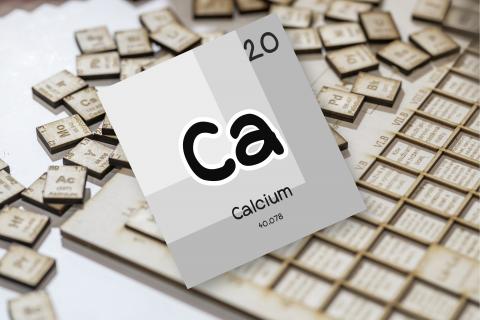Selecting the best journals for our papers

Radical-Free Corner by Alicia Kowaltowski & coauthors [1], from Instituto de Química da USP
Corresponding author e-mail: alicia@iq.usp.br
Scientific publications in specialized journals have always been the cornerstone of communication between scientists, allowing for the exchange of new knowledge. However, the number of specialized scientific journals in the Biochemistry and Molecular Biology area has grown quickly within the last few years, and is 50% larger today than it was 15 years ago. Within this changing situation, choosing an adequate journal to submit to requires new considerations. With this in mind, the Department of Biochemistry, University of São Paulo, prepared a published guideline for what it considers should be the main points taken when choosing a journal [1]. The consensus agreement of the 48 authors of this position paper is summarized in the following bullet points:
“-Submit pre-prints whenever possible, avoiding their use only when a target journal does not permit it or it is unadvisable (such as for clinical studies), and then proceed with submission to a quality peer-reviewed journal.
-Value and provide high quality peer-review in scientific journals, both by delivering careful revisions, when requested, and seeking good revisions of submissions.
-Give preference to journals with a solid and time-tested reputation for quality, irrespective of current impact factor.
-Denounce and avoid unfair pricing for both subscription and open access journals.
-Value journals with good visibility, indexed widely, and that appeal to a general audience.
-Give preference to journals with strong links to academic societies and that include active and highly reputable investigators on their boards and advisory committees.”
One much discussed point in 2019 was the idea that scientific publications should be freely accessible to all readers. This concept was pushed strongly by Plan S, an ambitious proposal launched in September 2018 to make open access publications mandatory worldwide by January 2020 (now pushed back to January 2021 [2]). While the Department of Biochemistry authors believe open access publications should prevail in the future, they caution that an uncontrolled and fast push for immediate open access can strengthen two very large problems in the scientific publication landscape: predatory publications [4] and abusive pricing [1].
An alternative that provides immediate open access reading and meets the requirements established in 2019 by our main research funding agency FAPESP [3] is to deposit pre-prints of papers prior to final peer-reviewed publications. Pre-printing is generally recommended by the position paper [1], which also indicates that a final peer-reviewed publication is important for the visibility and quality boost that the revision process provides.
Another point almost universally considered when choosing journals is impact factor. The authors of the position paper caution that impact factors have many caveats, and that the general idea should be to favor a broad audience of scientist readers and not simply a highly flawed number. Instead, the quality of the editorial board, institutions backing the journal (such as reputable scientific societies) and its time-tested reputation should be more important when choosing journals.
Indeed, a collective New Year´s publication resolution [5] should be made among scientists for 2020: to consult the history of a journal and the lists of names in the editorial boards, selecting those with the highest quality scientists in the field, regardless of impact factor. This would ensure the best possible peer-review process for the paper, and therefore contribute toward the generation of high quality Science.
References
- M.S. Baptista, M.J.M. Alves, G.M. Arantes, H.A. Armelin, O. Augusto, R.L. Baldini, D.S. Basseres, E.J.H. Bechara, A. Bruni-Cardoso, H. Chaimovich, P. Colepicolo Neto, W. Colli, I.M. Cuccovia, A.M. Da-Silva, P. Di Mascio, S.C. Farah, C. Ferreira, F.L. Forti, R.J. Giordano, S.L. Gomes, F.J. Gueiros Filho, N.C. Hoch, C.T. Hotta, L. Labriola, C. Lameu, M.T. Machini, B. Malnic, S.R. Marana, M.H.G. Medeiros, F.C. Meotti, S. Miyamoto, C.C. Oliveira, N.C. Souza-Pinto, E.M. Reis, G.E. Ronsein, R.K. Salinas, D. Schechtman, S. Schreier, J.C. Setubal, M.C. Sogayar, G.M. Souza, W.R. Terra, D.R. Truzzi, H. Ulrich, S. Verjovski-Almeida, F.V. Winck, B. Zingales, A.J. Kowaltowski. Where do we aspire to publish? A position paper on scientific communication in biochemistry and molecular biology Brazilian Journal of Medical and Biological Research, 52(9): 2019. | doi: 10.1590/1414-431x20198935
- E. S. Foundation. 'Plan S' and 'cOAlition S' – Accelerating the transition to full and immediate Open Access to scientific publications [Homepage] 2020. | url: https://www.coalition-s.org
- F. Marques. FAPESP lança política para acesso aberto Pesquisa FAPESP [on-line], 2019. | url: https://revistapesquisa.fapesp.br/2019/03/14/fapesp-lanca-politica-para-acesso-aberto/
- A. H. P. Duncan. Predatory publishers: the journals that churn out fake science The Guardian [on-line], 2018. | url: https://www.theguardian.com/technology/2018/aug/10/predatory-publishers-the-journals-who-churn-out-fake-science
- L. M. Gierasch. JBC’s New Year’s resolutions: Check them off! Journal of Biological Chemistry, 292(52): 21705–6, 2017. | doi: 10.1074/jbc.e117.001461


Add new comment